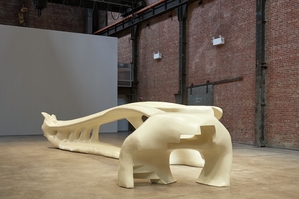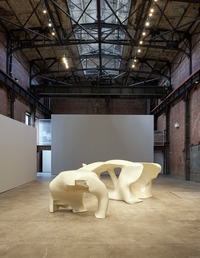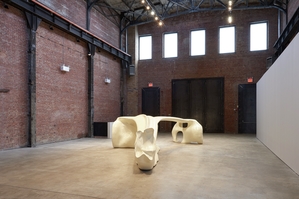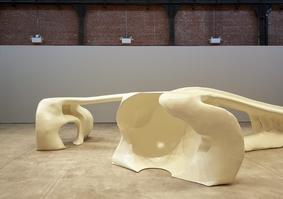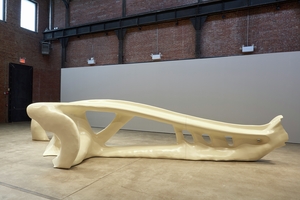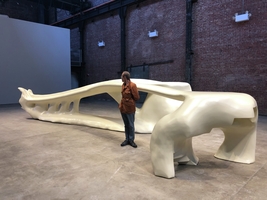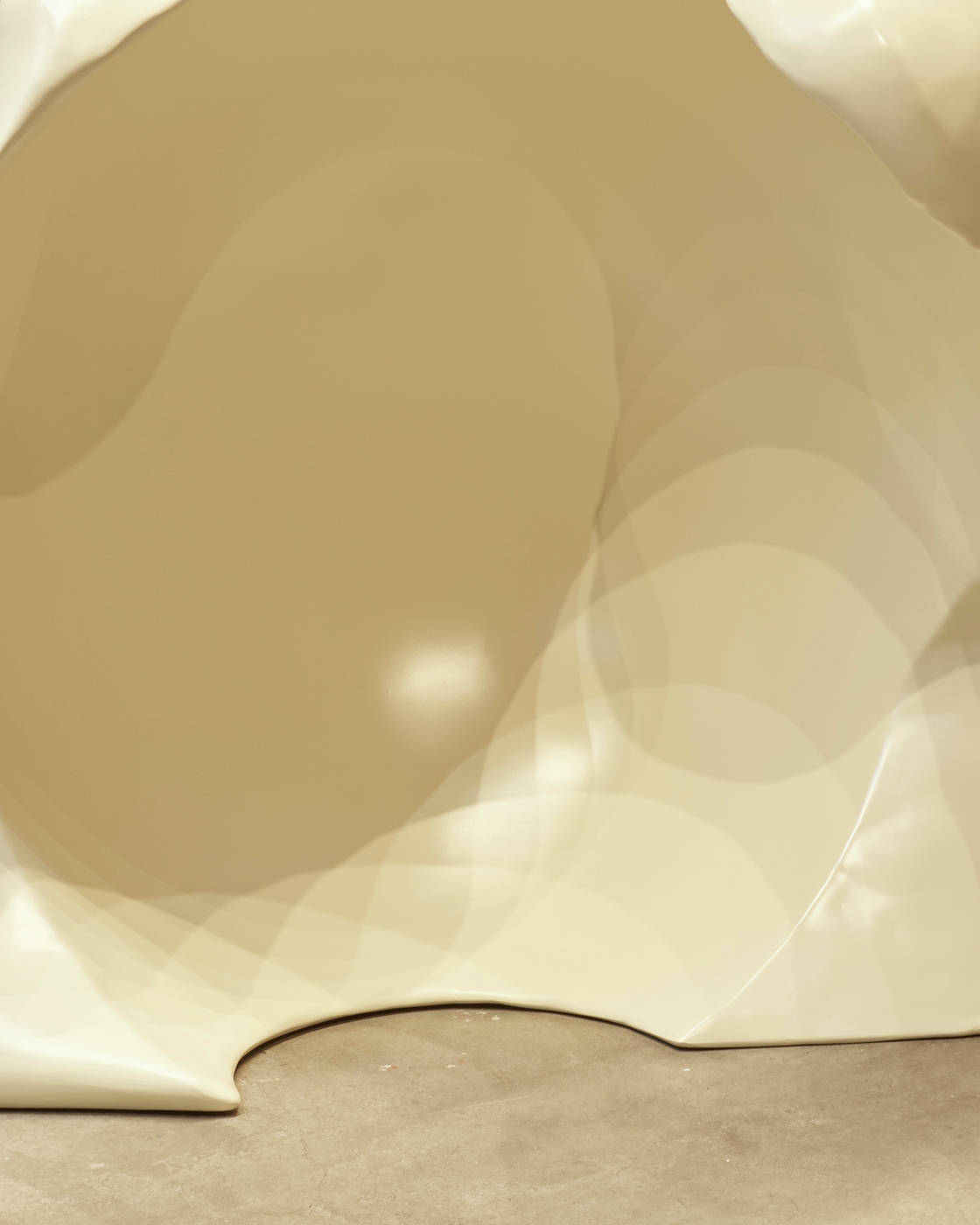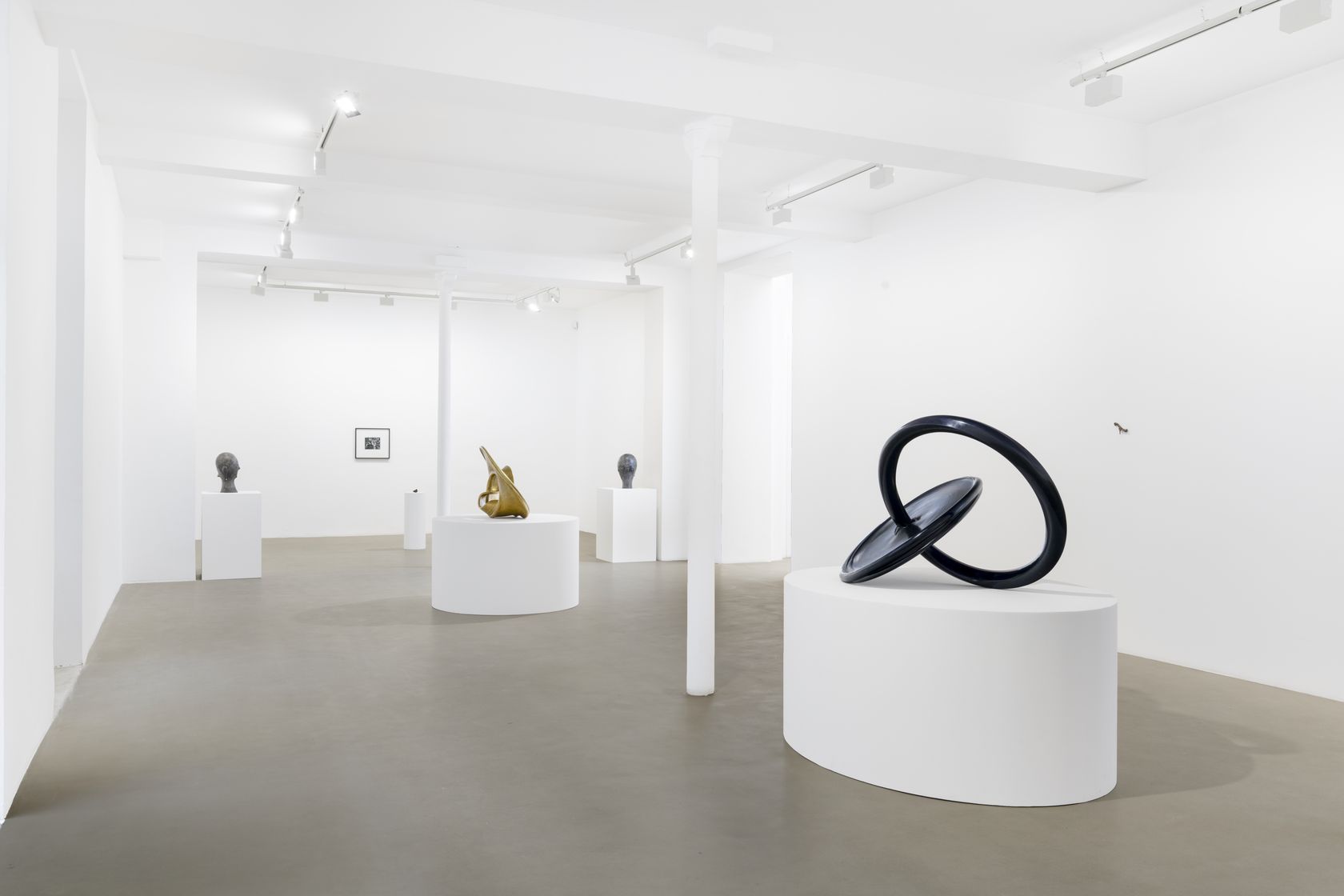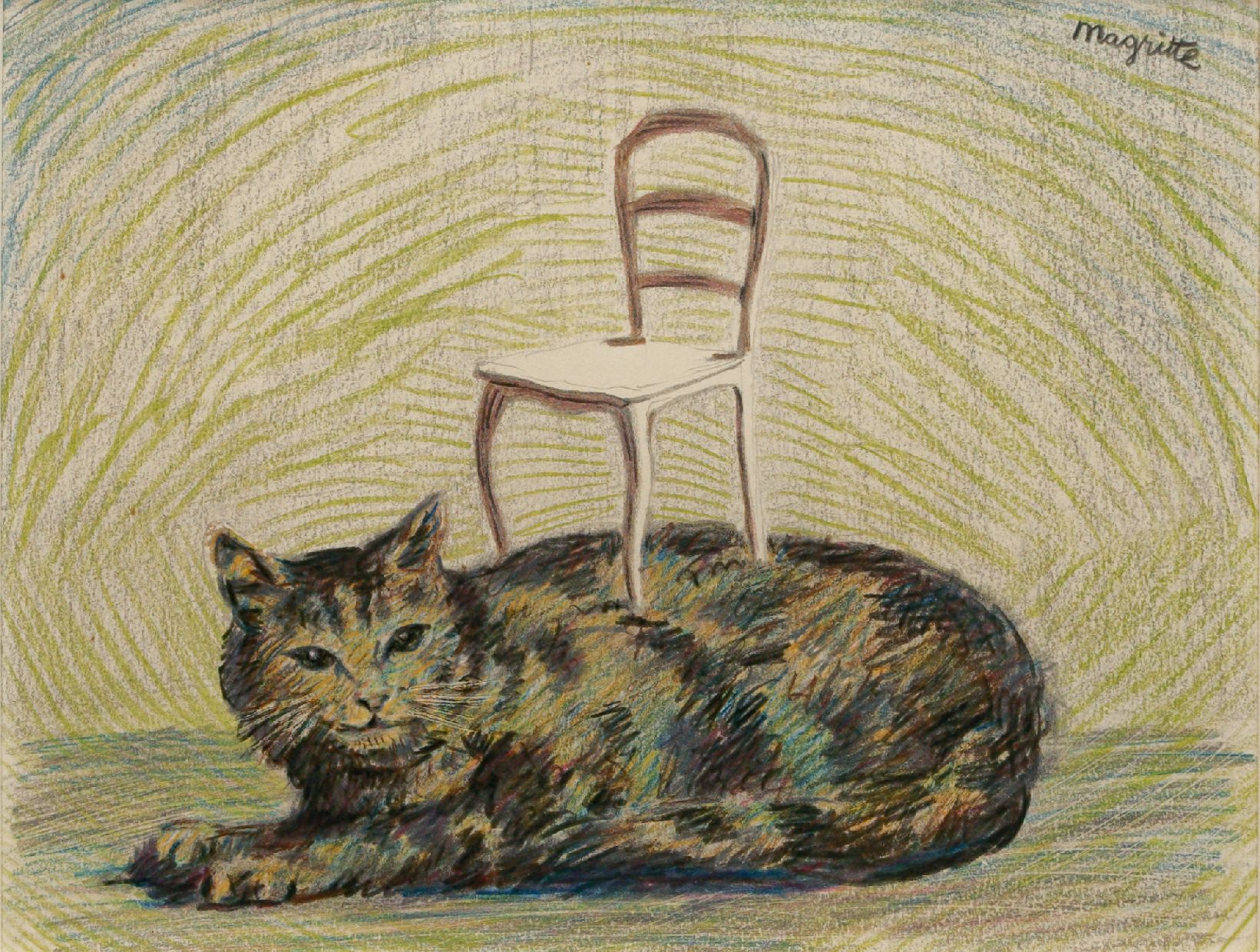Long Island City, NY — SculptureCenter is pleased to premiere More or Less Bone (Formal Topological Optimization) (Paris-NY, 2018-19), a monumental new work in fiberglass and epoxy paint by Jean-Luc Moulène. The exhibition marks the artist’s first institutional exhibition in North America since 2011.
Moulène insists that no work of art exists “without conditions and constraints...without material, economic, historic, and bodily conditions.” For More or Less Bone, Moulène pragmatically centers the production of his work on these conditions, generating form through the exploitation of advanced engineering procedures, or, as the artist describes, making “a piece that is nothing but its own condition of existence.”
Moulène has collaborated closely with engineers from Aerospace Valley (France’s Silicon Valley) with advanced expertise in formal optimization, wherein the form of an object is defined through a process that identifies the best (most efficient, least wasteful) solution given a set of discrete variables. The “problem” devised by the artist is to produce an optimized form connecting three generic objects: a sphere (an abstract form), a spiral staircase (a constructed form), and a knucklebone (an organic form). Modeling these conditions in CATIA and other software, Moulène and the engineers introduced further constraints, manipulating the form of this “object of juncture” to account for a set volume, scale, terrestrial gravity, the material properties of fiberglass, and environmental conditions like wind and earthquakes.
The result of this optimization, a process often employed to increase efficiency and profitability in manufacturing, is an object that looks remarkably like a bone. If a work of art as such exists alongside the social/material matrix of a certain moment in time, which could otherwise be called politics, then Moulène’s More or Less Bone posits that the conditions of optimized production drive all form toward the skeletal: fleshless, scraped clean, hard, and without waste; the absolute minimum necessary.
Initially known for his enigmatic photographic endeavors, Moulène’s more recent projects have investigated the intersections of advanced technology and contemporary material culture. In consideration of current advances in 3D modeling and fabrication, Moulène compares this moment in the history of object making to the advent of photography and its total transformation of human experience. While photography reproduced the world as an image, we are now about to print it in 3D. His art takes part in the rapid advancement of such technologies that re/produce the world, making palpable the social and historical dimensions that are absent in its conventional objects and commodities.
